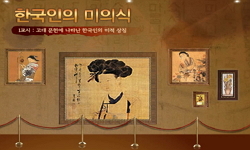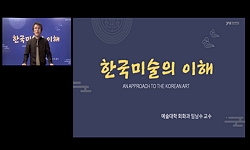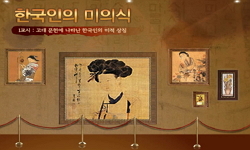1913년 문을 연 쾰른 동아시아미술관은 독일뿐 아니라 유럽에서 동아시아 미술품을 민족학으로부터 분리해 독자적으로 다룬 최초의 전문 미술관으로 꼽힌다. 쾰른 동아시아미술관은 설립자...
http://chineseinput.net/에서 pinyin(병음)방식으로 중국어를 변환할 수 있습니다.
변환된 중국어를 복사하여 사용하시면 됩니다.
- 中文 을 입력하시려면 zhongwen을 입력하시고 space를누르시면됩니다.
- 北京 을 입력하시려면 beijing을 입력하시고 space를 누르시면 됩니다.

아돌프 피셔의 쾰른 동아시아미술관과 한국 미술 = Adolf Fischer’s Museum for East Asian Art in Cologne and Korean Art
한글로보기https://www.riss.kr/link?id=A108924873
-
저자
이화진 (이화여자대학교)
- 발행기관
- 학술지명
- 권호사항
-
발행연도
2023
-
작성언어
Korean
-
주제어
Museum for East Asian Art Cologne ; Adolf Fischer ; japonisme ; imperialism ; colonialism ; Korean art ; Goryeo celadon ; 쾰른 동아시아미술관 ; 아돌프 피셔 ; 자포니즘 ; 제국주의 ; 식민주의 ; 한국 미술 ; 고려청자
-
등재정보
KCI등재
-
자료형태
학술저널
-
수록면
81-110(30쪽)
- 제공처
- 소장기관
-
0
상세조회 -
0
다운로드
부가정보
국문 초록 (Abstract)
1905년 피셔는 일본 나라의 호류지를 비롯해 여러 사찰과 박물관에서 보았던 수준 높은 불교 미술의 기원을 찾아 한국을 방문하지만 물적 증거를 찾지 못한다. 더욱이 금강산의 사찰을 찾아가는 동안 피셔는 나무에 매달린 수많은 부적과 무속 신앙의 흔적을 보면서 조선의 건국과 함께 위대한 불교 미술품을 만들어내던 정신이 사라졌다고 판단한다. 결국 피셔 부부는 한국 미술에서 가장 독자적이고 창조적인 영역은 도자기뿐이며, 특히 고려청자가 뛰어난 성과를 거두었다고 생각한다. 그러나 7년에 걸친 히데요시의 정벌은 한국 도자기가 일본에서 꽃피는 결과를 낳았고 이후 한국 미술은 생명력을 잃고 몰락의 길을 걷게 되었다고 여겼다. 두 번에 걸친 한국 방문을 통해 피셔는 한국 미술이 중앙아시아와 그리스-인도 미술의 잔재에 지나지 않으며 이를 일본으로 옮겨주는 다리에 불과하다고 결론짓는다. 그의 눈에 비친 한국 문화와 미술은 모두 중국으로 소급할 뿐이었다. 무엇보다 피셔 부부는 일제 강점기 서울에 머무르는 동안 일본 식민 정부가 세운 이왕가박물관을 방문하면서 한국 미술에 대한 감식안을 키우고 일본 미술상을 통해 한국 미술품을 사들였다. 더욱이 피셔가 출판한 한국 미술 논문과 쾰른 동아시아미술관 안내서는 일본의 식민 지배에 문화적으로 상응하는 시선을 보여준다. 즉 독일 제국의 문화 정치적 담론 안에서 동아시아미술관을 설립한 피셔는 동아시아 내의 또 다른 제국주의 질서에 동조하고 있었던 것이다. 20세기 초 독일에서 한국과 한국 미술을 독자적으로 다룬 자료가 절대적으로 부족한 상황에서 앞으로 한국 미술에 대한 독일인의 시선을 수정하고 올바른 가치 평가가 이루어지는...
1913년 문을 연 쾰른 동아시아미술관은 독일뿐 아니라 유럽에서 동아시아 미술품을 민족학으로부터 분리해 독자적으로 다룬 최초의 전문 미술관으로 꼽힌다. 쾰른 동아시아미술관은 설립자이자 초대 관장인 아돌프 피셔와 부인 프리다 피셔의 컬렉션을 토대로 세워졌으며 피셔 부부는 개관 때까지 동아시아를 여러 번 여행하면서 작품을 구매했다. 피셔는 동아시아 민족이 수천 년에 걸쳐 유럽에 버금가는 높은 수준의 미술을 형성했다고 생각했기 때문에 예술적 독자성과 순수한 미적 가치를 조망하는 미술관을 목표로 삼았다. 현재 쾰른 동아시아미술관이 소장한 400여 점의 한국 미술품은 유럽 내 한국 컬렉션 가운데 질적으로 높은 수준을 갖추었다고 평가된다. 무엇보다 피셔가 동아시아 문화와 미술에 흥미를 갖게 된 시기는 독일이 중국 칭다오에 식민지를 건설하면서 아시아로 진출하던 때였으며 일본 제국주의가 한국을 향하던 정치적 무대와도 연결되어 있었다. 피셔는 1873년 빈에서 열린 만국박람회를 통해 일본 문화로부터 깊은 인상을 받아 이후 일본을 자주 여행하며 작품을 수집했다. 그의 일본 컬렉션은 1900년 빈 분리파 전시회에 선보이기도 했으며 피셔에게 일본 미술은 중국과 한국 미술을 수용하는 통로가 되었다. 또한 빌헬름 2세의 독일 제국이 중국 시장과 자원을 획득하는 데 그치지 않고 점차 동아시아 국가의 언어, 문학, 역사를 이해하고 문화 산물을 수집하는 방향으로 식민 정책을 전환하면서 피셔는 1904년부터 1907년까지 베이징 주재 독일 대사관에 학술 전문가로 파견되어 베를린 민족학박물관뿐 아니라 자신의 개인 컬렉션을 위해 작품을 구입할 수 있었다.
1905년 피셔는 일본 나라의 호류지를 비롯해 여러 사찰과 박물관에서 보았던 수준 높은 불교 미술의 기원을 찾아 한국을 방문하지만 물적 증거를 찾지 못한다. 더욱이 금강산의 사찰을 찾아가는 동안 피셔는 나무에 매달린 수많은 부적과 무속 신앙의 흔적을 보면서 조선의 건국과 함께 위대한 불교 미술품을 만들어내던 정신이 사라졌다고 판단한다. 결국 피셔 부부는 한국 미술에서 가장 독자적이고 창조적인 영역은 도자기뿐이며, 특히 고려청자가 뛰어난 성과를 거두었다고 생각한다. 그러나 7년에 걸친 히데요시의 정벌은 한국 도자기가 일본에서 꽃피는 결과를 낳았고 이후 한국 미술은 생명력을 잃고 몰락의 길을 걷게 되었다고 여겼다. 두 번에 걸친 한국 방문을 통해 피셔는 한국 미술이 중앙아시아와 그리스-인도 미술의 잔재에 지나지 않으며 이를 일본으로 옮겨주는 다리에 불과하다고 결론짓는다. 그의 눈에 비친 한국 문화와 미술은 모두 중국으로 소급할 뿐이었다. 무엇보다 피셔 부부는 일제 강점기 서울에 머무르는 동안 일본 식민 정부가 세운 이왕가박물관을 방문하면서 한국 미술에 대한 감식안을 키우고 일본 미술상을 통해 한국 미술품을 사들였다. 더욱이 피셔가 출판한 한국 미술 논문과 쾰른 동아시아미술관 안내서는 일본의 식민 지배에 문화적으로 상응하는 시선을 보여준다. 즉 독일 제국의 문화 정치적 담론 안에서 동아시아미술관을 설립한 피셔는 동아시아 내의 또 다른 제국주의 질서에 동조하고 있었던 것이다. 20세기 초 독일에서 한국과 한국 미술을 독자적으로 다룬 자료가 절대적으로 부족한 상황에서 앞으로 한국 미술에 대한 독일인의 시선을 수정하고 올바른 가치 평가가 이루어지는...
다국어 초록 (Multilingual Abstract)
Opend in 1913, the Museum for East Asian Art in Cologne is thought to be the first art museum not only in Germany but also in Europe to specialize in East Asian art separately from ethnology. The museum was built on the collection of its founder and f...
Opend in 1913, the Museum for East Asian Art in Cologne is thought to be the first art museum not only in Germany but also in Europe to specialize in East Asian art separately from ethnology. The museum was built on the collection of its founder and first director, Adolf Fischer, and his wife, Frieda Fischer, who traveled extensively in East Asia in the years prior to its opening. The Fischers believed that the peoples of East Asia had produced art of a high level comparable to that of Europe over thousands of years, so they aimed to create an art museum that celebrated artistic independence and pure aesthetic value. The approximately 400 pieces of Korean art currently held by the Museum for East Asian Art in Cologne are considered to be of the finest quality among the Korean collections in Europe. Fischer’s interest in East Asian culture and art coincided not only with Germany’s expansion into Asia with the establishment of a colony in Qingdao, China, but also with Japanese imperialism’s political turn toward Korea. Fischer was impressed by Japanese culture at the 1873 Vienna World’s Fair and thereafter traveled frequently to Japan and collected art works. His Japanese collection was displayed at the Vienna Secession Exhibition in 1900, and Japanese art became a path to understanding Chinese and Korean art for him. As the German Empire under Wilhelm II shifted its colonial policy from seeking to acquire markets and resources in mainland China to gradually understanding the languages, literature, and history of East Asian countries and collecting their cultural products, Fischer was assigned as an academic specialist to the German Embassy in Peking from 1904 to 1907. There, he was able to collect works for the Ethnological Museum in Berlin as well as for his own private collection. In 1905, Fischer visited Korea in search of the origins of the early Buddhist art he had seen in Japanese temples and museums, including Horyuji Temple in Nara, Japan, but was unable to find any physical evidence. Moreover, while visiting famous temples like Yujeomsa on Mount Kumgang, Fischer saw countless amulets hanging from trees and concluded that the spirit of creating great works of Buddhist art disappeared with the founding of Joseon. Ultimately, Fischer believed that the most unique and creative aspect of Korean art was ceramics, especially Goryeo celadon, which reached the highest level. However, Hideyoshi’s seven-year conquest resulted in Korean ceramics blossoming in Japan, while Korean art lost its vitality and fell into decline. After two visits to Korea, Fischer concluded that Korean art was nothing more than a remnant of Central Asian and Greco-Indian art and a bridge to transport it to Japan. In his eyes, Korean culture and art could all be traced back to China. Above all, during his stay in Seoul under the Japanese occupation, Fischer developed an appreciation for Korean art by visiting the Yi Royal Family Museum, which was built by the Japanese colonial government, and purchased Korean art from Japanese art dealers. Moreover, the Korean art described in Fischer’s published articles and in the guide to the Museum for East Asian Art in Cologne shows a culturally corresponding perspective on Japan’s colonial rule. In other words, Fischer, who founded the Museum for East Asian Art within the cultural and political discourse of the German Empire, was culturally aligned with another colonial structure within East Asia. Given the overwhelming lack of materials that independently deal with Korea and Korean art in the early 20th century in Germany, I hope that this article can provide an opportunity to correct the Germans’ perspective on Korean art so that a proper evaluation of its value can be made.
참고문헌 (Reference)
1 한국 박물관 100년사 편찬위원회, "한국 박물관 100년사. 본문편" 국립중앙박물관 2009
2 이율, "독일 훔볼트포럼 日촬영 추정 가슴 드러낸 조선여성 사진 철거" 연합뉴스
3 국립문화재연구소, "독일 쾰른 동아시아박물관 소장 한국문화재" 국립문화재연구소 2007
4 Saalmann, Timo, "„SCHAUBARKEIT“. Die Neuordnung des Berliner Museums für Völkerkunde in den 1920er Jahren" 62 : 177-201, 1920
5 Fischer, Adolf, "Über koreanische Kunst" 1 (1): 149-162, 1910
6 Fischer, Adolf, "Zur Eröffnung des Museums für ostasiatische Kunst der Stadt Köln" 5 : 703-718, 1913
7 Altmann, Julia, "Vermittlungsarbeit im Museum für Ostasiatische Kunst Köln" 3 : 31-43, 2004
8 Howe, Winifred E., "The Museum of Eastern Asiatic Art in Cologne" 9 (9): 172-174, 1914
9 Butz, Herbert, "Museum für Ostasiatische Kunst Berlin" Prestel 2000
10 Fischer, Adolf, "Kleiner populärer Führer durch das Museum für ostasiatische Kunst der Stadt Cöln" Du Mont Schauberg 1913
1 한국 박물관 100년사 편찬위원회, "한국 박물관 100년사. 본문편" 국립중앙박물관 2009
2 이율, "독일 훔볼트포럼 日촬영 추정 가슴 드러낸 조선여성 사진 철거" 연합뉴스
3 국립문화재연구소, "독일 쾰른 동아시아박물관 소장 한국문화재" 국립문화재연구소 2007
4 Saalmann, Timo, "„SCHAUBARKEIT“. Die Neuordnung des Berliner Museums für Völkerkunde in den 1920er Jahren" 62 : 177-201, 1920
5 Fischer, Adolf, "Über koreanische Kunst" 1 (1): 149-162, 1910
6 Fischer, Adolf, "Zur Eröffnung des Museums für ostasiatische Kunst der Stadt Köln" 5 : 703-718, 1913
7 Altmann, Julia, "Vermittlungsarbeit im Museum für Ostasiatische Kunst Köln" 3 : 31-43, 2004
8 Howe, Winifred E., "The Museum of Eastern Asiatic Art in Cologne" 9 (9): 172-174, 1914
9 Butz, Herbert, "Museum für Ostasiatische Kunst Berlin" Prestel 2000
10 Fischer, Adolf, "Kleiner populärer Führer durch das Museum für ostasiatische Kunst der Stadt Cöln" Du Mont Schauberg 1913
11 Grothe, Hugo, "Kleine Mitteilungen. Museen" 1 (1): 43-46, 1910
12 Fischer, Frieda, "Japanisches Tagebuch" Bruckmann 1938
13 Moore, Susan, "Haut de Cologne. East Asian Art in Cologne" 189 (189): 46-51, 2019
14 Fischer, Adolf, "Erfahrungen auf dem Gebiete der Kunst und sonstige Beobachtungen in Ostasien" 41 (41): 1-21, 1909
15 Rösch, Petra, "Entdeckung Korea! Schätze aus deutschen Museen" Korea Foundation 100-125, 2011
16 Wember, "Die Museen der Stadt Köln" 15 : 241-247, 1953
17 Kessler-Lehmann, Margrit, "Die Kunststadt Köln: von der Raumwirksamkeit der Kunst in einer Stadt" Wirtschafts- und Sozialgeographisches Inst. der Univ 1993
18 Lommel, Andreas, "Das neue Museum für ostasiatische Kunst in Köln" 90 : 94-96, 1978
19 Fischer-Wieruszowski, Frieda, "Das Museum für ostasiatische Kunst der Stadt Köln" 51 : 32-43, 1922
20 Hinz, Thomas, "Das Dilemma mit der Exotik. Neuigkeiten aus den Völkerkundemuseen?" 50 : 275-288, 2004
21 Fischer, Frieda, "Chinesisches Tagebuch" Bruckmann 1942
22 Schlombs, Adele, "Aufbruch in eine neue Zeit : Die Gründung des Museums für Ostasiatische Kunst in Köln" Museum für Ostasiatische Kunst 2009
동일학술지(권/호) 다른 논문
-
- 한국미술연구소
- 홍선표
- 2023
- KCI등재
-
- 한국미술연구소
- 이성례
- 2023
- KCI등재
-
- 한국미술연구소
- 모리카와 모나미
- 2023
- KCI등재
-
타이완 아티스트 런 스페이스 ‘산우’의 전시로 행동하기: 《변태경로 - 2020 타이완 미술비엔날레 병행 전시》를 중심으로
- 한국미술연구소
- 천관잉
- 2023
- KCI등재




 KCI
KCI DBpia
DBpia







